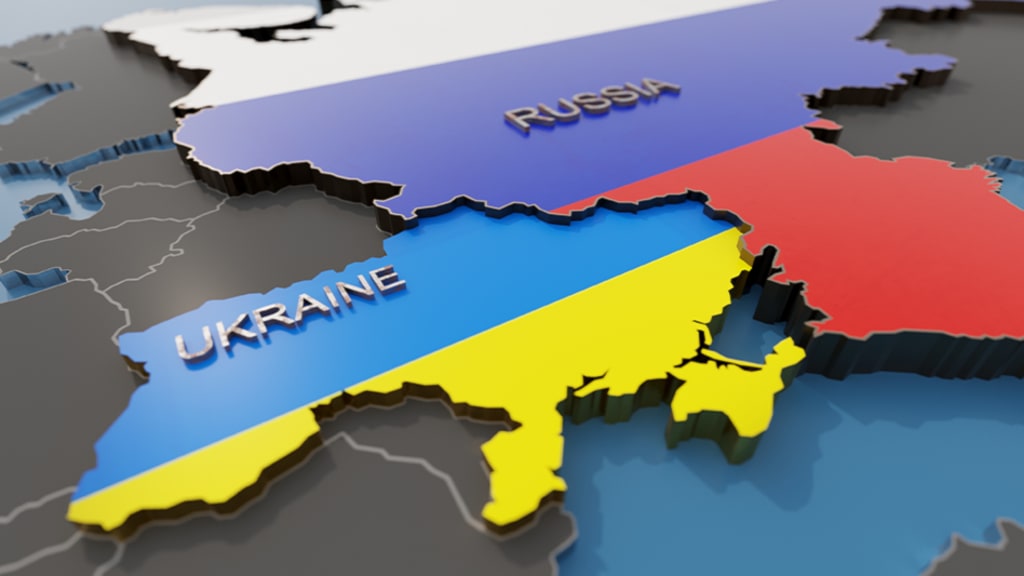Russia's War on Ukraine
Putin's "Special Military Operation" and Its Historical Context

In recent days, the world has been witness to a significant and distressing development in Eastern Europe. Russian President Vladimir Putin announced what he termed a "special military operation" in Ukraine. However, it is evident that this operation is, in fact, a full-scale invasion. The consequences have been immediate and devastating, with cities across Ukraine coming under attack, including the capital, Kyiv. As a result, many Ukrainians have sought refuge in basements and metro stations, and there have been hundreds of casualties. Over half a million people have been forced to flee their homes, marking this as one of Europe's largest conflicts since World War II.
To understand the gravity of the situation, it is crucial to delve into the historical context that has led to this point. Putin's desire to redraw Europe's map through force raises questions about the sovereignty of Ukraine and its historical ties to Russia.
Historical Background: Ukraine's Struggle for Identity
Ukraine's history is complex, with periods of both integration and independence from Russia. In the 18th and 19th centuries, Ukraine was part of the Russian Empire. However, the Russian Revolution of 1917 led to the collapse of the empire and a subsequent civil war in the region. During this brief period, Ukraine gained independence from Russian rule but was swiftly absorbed by the newly formed Soviet Union as one of its first republics.
Over the following decades, the Soviet Union expanded its control, leading to the end of World War II, which marked the beginning of the Cold War. Europe was divided into two spheres of influence, with the Western democracies and the Soviet Union on opposite sides. This ideological divide fueled distrust and tensions, resulting in the formation of military alliances such as NATO (North Atlantic Treaty Organization) and the Warsaw Pact.
NATO was created in 1949 by Western countries, including the United States and Canada, with the primary objective of defending each other in case of invasion. Meanwhile, the Warsaw Pact consisted of Eastern European countries led by the Soviet Union. This division persisted for decades until the collapse of the Soviet Union in the early 1990s.
The Post-Cold War Era and NATO Expansion
As the Soviet Union dissolved into independent nations, including a considerably weaker Russia, the Cold War's end shifted the geopolitical landscape. NATO, once primarily focused on countering the Soviet threat, found itself in a new era. In 1999, NATO expanded to include countries like Poland, Hungary, and the Czech Republic, all of which were formerly part of the Warsaw Pact. In 2004, seven additional countries joined, effectively moving NATO's borders closer to Russia.
This expansion brought NATO into the old Soviet sphere of influence, with Belarus, Ukraine, and Georgia remaining as the last post-Soviet countries between Russia and NATO. Ukraine and Georgia, in particular, expressed their desire to join NATO, which placed them squarely in Russia's crosshairs.
Ukraine's Path Towards Western Integration
Ukraine's journey toward closer ties with the West intensified in 2013 when the country was set to sign an association agreement with the European Union (EU). This agreement was seen as a significant step toward European integration and away from Russia's influence. However, Ukraine's pro-Russian government at the time refused to sign the deal, opting to strengthen its ties with Russia instead.
The decision triggered mass protests, with hundreds of thousands of Ukrainians taking to the streets to demand the agreement's signing. The peaceful protests escalated when the government cracked down, leading to over 100 deaths. Ultimately, the president was ousted, and Ukraine underwent a political transformation.
Russia's Response: Annexation and Separatist Movements
In response to losing political influence in Ukraine, Putin chose a different path. First, in 2014, Russia annexed Ukraine's Crimean Peninsula, drawing international condemnation. Subsequently, Russia-backed separatists seized control of the Donetsk and Luhansk regions in Eastern Ukraine, declaring them independent from Ukraine. This move marked the beginning of a prolonged conflict between Ukraine and Russia, resulting in significant casualties and displacement.
For nearly eight years, Putin maintained control over these regions, destabilizing Ukraine and preventing it from moving closer to Western institutions like the EU and NATO. However, the situation escalated dramatically in November 2021.
Putin's Ultimatum and the Full-Scale Invasion
In November 2021, Putin's intentions became increasingly clear when satellite images revealed the massing of Russian troops and military equipment along Ukraine's border. Putin demanded that NATO halt its expansion and move its military borders back to their 1997 positions, further away from Russia. Western leaders rejected these demands, opting to reinforce their military presence in Eastern Europe.
As tensions mounted, Russian troops continued to gather along Ukraine's border, while Russia conducted extensive military drills along its border with Belarus. On February 21, 2023, Putin recognized the independence of the Donetsk and Luhansk People's Republics, a move that escalated the crisis significantly.
The Full-Scale Invasion and Global Response
On February 24, 2023, Putin launched a full-scale invasion of Ukraine, prompting global condemnation. Leaders around the world spoke out against Russia's actions, while anti-war protests erupted worldwide. Neighboring nations opened their borders to Ukrainian refugees, and NATO activated its response force for the first time in its history. The United States also sent additional troops to Eastern Europe.
However, the world is treading cautiously due to Russia's possession of the largest nuclear arsenal and Putin's threats against those who interfere. Economic sanctions and military aid are being deployed to support Ukraine, but the situation remains precarious.
In conclusion, the Ukraine crisis is a complex and deeply rooted issue that extends beyond recent events. It encompasses historical ties, geopolitical shifts, and a struggle for Ukraine's identity and sovereignty. As the international community grapples with the unfolding crisis, it is essential to consider these historical factors in understanding the context and potential outcomes of this conflict. The world watches with bated breath as Ukraine's fate hangs in the balance, hoping for a peaceful resolution to this dire situation.
About the Creator
Enjoyed the story? Support the Creator.
Subscribe for free to receive all their stories in your feed. You could also pledge your support or give them a one-off tip, letting them know you appreciate their work.





Comments
There are no comments for this story
Be the first to respond and start the conversation.